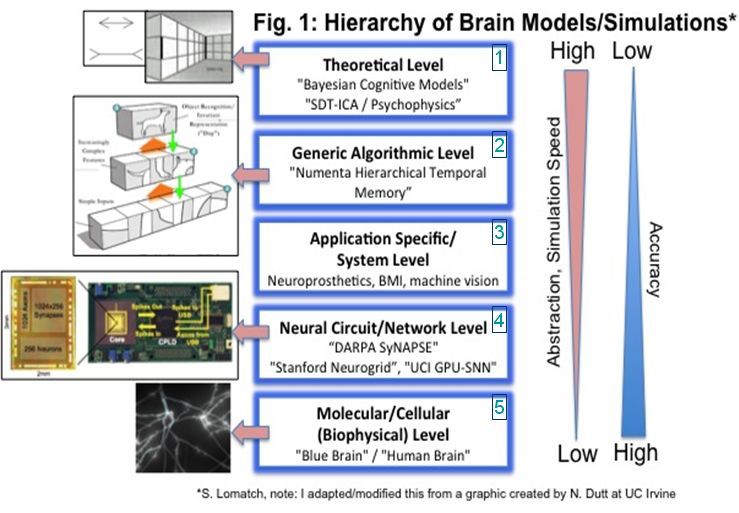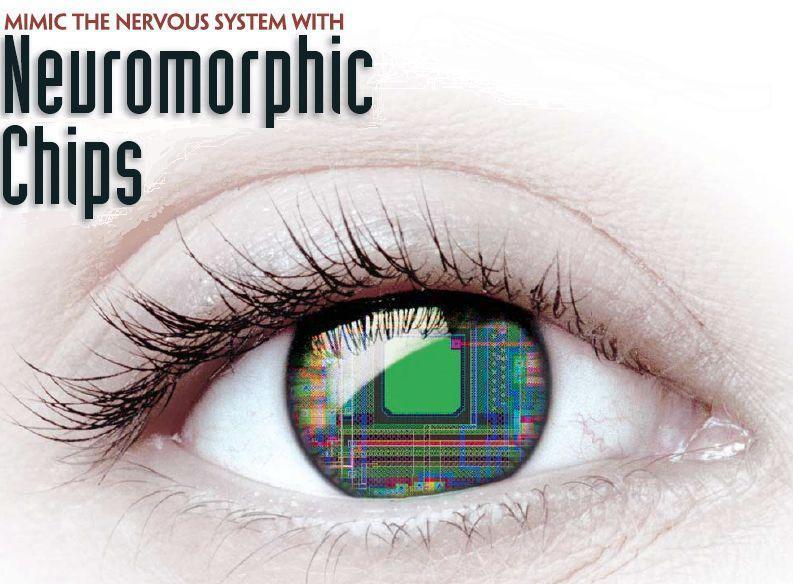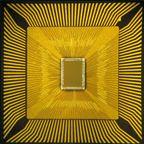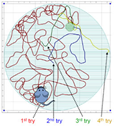
Activities
Деятельность
Раздел предназначен для размещения материалов, показывающих деятельность научно-исследовательских организаций и исследователей.
- Подробности
- Категория: Activities
- Просмотров: 4245
Проекты
О разделе
Projects and Research Fields. В этом разделе размещены аналитические обзоры, материалы и ссылки на проекты, связанные с исследованиями в предметной области "Интеллектуальные системы и искусственный интеллект" и доступные дистанционно для ознакомления.Список проектов составлен по результатам поиска в сети Интернет, в общедоступных базах данных и других информационных источниках. Составители не несут ответственности за точность представленной информации. Порядок размещения информации в списке выбран составителями.
Список ссылок непрерывно пополняется. Просьба присылать любые предложения, дополнения, изменения, уточнения информации, представленной в списке, по адресу E-mail: Этот адрес электронной почты защищён от спам-ботов. У вас должен быть включен JavaScript для просмотра..
Зарегистрированные авторы и редакторы разделов имеют прямой доступ к редактированию информации по разделу.
 Оглавление
Оглавление
- Введение. Технологическая гонка XXI века
- Общая классификация проектов
- Нейроморфные когнитивные системы и устройства - Neuromorphic hardware
- Имитация работы мозга с помощью компьютеров - Neural network simulation
- Крупно-масштабные проекты исследования и моделирования мозга
- Открытые проекты по созданию ИИ и ИР - Open AI & AGI Projects
- Киборгизация и интерфейс "человек-машина"
- Робототехника
- Related Link
- Related Link
- Related Link
1. Введение. Технологическая гонка XXI века
Аналитический обзор.
Источники:
Дополнительная информация:
Информационный портал
Блоги и форумы по теме
Термин Computational neuroscience обычно применяют к первой группе методов, а Neuromorphic engineering – к второй.
Эти попытки моделирования и имитации мозга можно разбить на несколько уровней (Рис. 1):

Рис. 1. Иерархия моделей/имитаций мозга
1 - Уровень теоретический - (на высшем уровне абстракции).
Примеры: Проекты/Модели "Bayesian Cognitive Models", "SDT-ICA / Psychophysics"
2 - Уровень обобщенно-алгоритмический
Пример: Проект/Архитектура "Numenta Hierarchical Temporal Memory"
3 - Уровень конкретного применения / системы
Примеры: Проекты/Технологии Neuroprosthetics, BMI, Machine Vision
4 - Уровень нейросхемы/нейросети
Примеры: Проекты/Нейросхемы "SyNAPSE (DARPA - IBM, HRL)", "Neurogrid (Stanford)", "GPU-SNN (UCI)"
5 - Уровень молекулярно/клеточный (биофизический) - (на высшем уровне точности),
Примеры: Проекты/Компьютерные имитации "Blue Brain Project" и "Human Brain Project" (Евросоюз)
Источники:
1. Susanne Lomatch. The State of AI, Part 3: Brain Simulations and Neuromorphic Engineering
http://www.eidolonspeak.com/Artificial_Intelligence/StateOfAI_Part3-1.html
2. Donald Bren - Statement of Research
http://www.docstoc.com/docs/156151422/statement-of-research---Donald-Bren-School-of-Information-and--ag
Дополнительная информация:
Информационный портал "Artificial brains" и другие порталы по теме
Блоги и форумы по теме
3. Нейроморфные когнитивные системы и устройства - Neuromorphic Hardware
 Аналитический обзор.
Аналитический обзор.
Исследования и разработки.
Участники проектов.
Источники:
Изображение: Scientific American

SyNAPSE Project (USA)
SyNAPSE (Systems of Neuromorphic Adaptive Plastic Scalable Electronics) - DARPA-funded program, USA.
The stated purpose is to "investigate innovative approaches that enable revolutionary advances in neuromorphic electronic devices that are scalable to biological levels.
Laboratories/Organizations: The project is primarily contracted to IBM and HRL who in turn subcontract parts of the research to various US universities (All participants).
Teams: Dharmendra Modha, manager of IBM's cognitive computing initiative | Narayan Srinivasa, manager of HRL's Center for Neural and Emergent Systems

SpiNNaker Project (UK)
The SpiNNaker (A Universal Spiking Neural Network Architecture) Project is a novel massively-parallel computer architecture, inspired by the fundamental structure and function of the human brain, which itself is composed of billions of simple computing elements, communicating using unreliable spikes. SpiNNaker (Wikipedia)
Laboratory/Organization: The Advanced Processor Technologies Group (APT), School of Computer Science, The University of Manchester, United Kingdom, The consortium of 7 universities.
Team:

BrainScaleS Project (EU)
The BrainScaleS project (Brain-inspired multiscale computation in neuromorphic hybrid systems) aims at understanding function and interaction of multiple spatial and temporal scales in brain information processing.
Laboratory/Organization: The European consortium of 18 groups from Austria, France, Germany, Hungary, Netherlands, Spain, Sweden, Switzerland and the UK.
Team: Meier, Karlheinz, BrainScaleS Coordinator, Kirchhoff Institute for Physics, Heidelberg, Germany

Neurogrid Project (USA)
Brains in Silicon group at Stanford University has built a board with 16 (and more) neuromorphic processors that implements 1 million (and more) spiking neurons.
http://www.stanford.edu/group/brainsinsilicon/
Еще статьи...
- Проекты по ИИ 1
- Проекты по ИИ 2
- Проекты по ИИ 3
4. Имитация работы мозга с помощью компьютеров - Neural Network Simulation
 Аналитический обзор.
Аналитический обзор.
Исследования и разработки.
Источники:

Blue Brain Project (EU - IBM)
Blue Brain Project is an attempt to create a synthetic brain by reverse-engineering the mammalian brain down to the molecular level.
Laboratory/Organization: The Brain and Mind Institute (BMI) of the École Polytechnique Fédérale de Lausanne (EPFL), Lausanne, Switzerland. The Center for Neuroscience and Technology
Team: Markram, Henry - founder/director of the Brain Mind Institute (BMI), Director of the Center for Neuroscience and Technology. | Hill, Sean | Schürmann, Felix

SPAUN Project (Canada)
A Large-Scale Model of the Functioning Brain. Spaun is a biologically-realistic brain simulation that contains 2.5 million neurons. It can perform simple arithmetic and other tasks.
Laboratory/Organization: Centre for Theoretical Neuroscience, University of Waterloo, Waterloo, ON, Canada
Team: Chris Eliasmith, Terrence C. Stewart, Xuan Choo, Trevor Bekolay, Travis DeWolf, Yichuan Tang, and Daniel Rasmussen.
http://nengo.ca/build-a-brain/spaunvideos

China-Brain Project (China)
China-Brain Project is an attempt to build China’s first artificial brain by evolving tens of thousands of neural net modules quickly using Celoxica accelerator boards, downloading the results into the memory of a PC, connecting them to make an artificial brain, and having the PC perform the neural signaling of the whole brain in real time to control the hundreds of behaviors of robots.
The Artificial Brain Lab (ABL) of the School of Information Science and Technology (SIST) of Xiamen University, Fujian Province, China.
Team: Hugo de Garis (Xiamen University, China), Chen Xiaoxi (Xiamen University, China) and Ben Goertzel (Novamente LLC, USA & Singularity Institute, USA & Xiamen University, China)
Information

Ersatz Brain Project (USA)
The Ersatz Brain Project - A Brain-Like Computer for Cognitive Software Applications.
Laboratory/Organization: Department of Cognitive, Linguistic & Psychological Sciences (CLPS)/Brown University, Providence, RI, USA - (Research Gallery)
Team: Anderson, James A., Professor of Cognitive and Linguistic Sciences (website) (Profile) | Guralnik,Gerald S., Professor of Physics (website) | Scheinberg, David, Assistant Professor of Neuroscience (website) / Brown Institute for Brain Science (BIBS)

MoNETA Project (USA)
MoNETA project (MOdular Neural Exploring Traveling Agent) by Boston University and Hewlett Packard (HP).
http://nl.bu.edu/research/projects/moneta/
The HP team, lead by Greg Snider, is building a neural network platform called Cog Ex Machina which can run on CPUs, GPUs, and forthcoming memristor-based computers.
Meanwhile the Neuromorphics Lab at Boston University, lead by Massimiliano Versace, is building MoNETA - a modular artificial brain that runs on top of Cog Ex Machina.

Neurona@Home
(Spain, Open Project)
Project site
Neurona@Home is a BOINC-based project with the main aim of simulating the behavior of a large assembly of cellular automata neurons connected in a complex network. The project takes hundreds of internet-connected computers from all over the world and uses them to simulate a 1,000,000 neuron bee brain. Two types of neurons: inhibitory and exitatory, each neuron can be one of three states: resting, activated, refactory. Model assigns each neuron a state and chooses interconnection values.
Uses the BOINC distributed computing platform. The Berkeley Open Infrastructure for Network Computing (BOINC) is an open source middleware system for volunteer and grid computing.
Lead researcher is Dr. Javier Villanueva at the Complutense University of Madrid, Spain.
Еще статьи...
- Проекты по ИИ 1
- Проекты по ИИ 2
- Проекты по ИИ 3
5. Крупно-масштабные проекты исследования и моделирования мозга
 Аналитический обзор.
Аналитический обзор.
Исследования и разработки.
Источники:

Human Brain Project (EU)
Ambitious "big brain" idea of the European Union - The Human Brain Project would scale up Blue Brain Project to simulate the human brain.
Official website
The Human Brain Project (HBP) is a research project which aims to simulate the human brain with supercomputers to better understand how it functions. The end hopes of the HBP include being able to mimic the human brain using computers and being able to better diagnose different brain problems.
It is directed by the École polytechnique fédérale de Lausanne and co-directed by Heidelberg University, the University Hospital of Lausanne and the University of Lausanne.

BRAIN Initiative (USA)
Ambitious "big brain" idea of the Obama administration:
President Obama announced plans for a long-term project to map the human brain at all levels, from individual neurons to complex neural circuits, called the BRAIN Initiative (Brain Research through Advancing Innovative Neurotechnologies).
Подробнее...

Human Connectome Project (USA)
The NIH Human Connectome Project is an ambitious effort to map the neural pathways that underlie human brain function.
Official website of the Human Connectome Project
Principal Investigators: Dr. Arthur W. Toga, Director, Laboratory of Neuro Imaging (LONI), the University of Southern California (USC) | Bruce R Rosen, Director, Martinos Center for Biomedical Imaging, Department of Radiology, the Massachusetts General Hospital (MGH) | Van J Wedeen, Director of Connectomics at Martinos Center, Department of Radiology, MGH
Подробнее...
Еще статьи...
- Проекты по ИИ
- Проекты по ИИ 2
- Проекты по ИИ 3
6. Открытые проекты по созданию ИИ и Искусственного Разума - Open AI & AGI Projects
 Аналитический обзор.
Аналитический обзор.
Исследования и разработки.
Источники:

OpenCog Project (Open Project)
OpenCog is an open-source software project to build a human-level artificial general intelligence (AGI). The name "OpenCog" is derived from "open", meaning open source, and "cog", meaning cognition. The project is led by Ben Goertzel.
OpenCog doesn't emulate the human brain in any detail. Instead it uses currently available computer hardware to run software that draws inspiration from neuroscience, cognitive psychology, and computer science. The assumption is that the human brain is only one particular way of achieving general intelligence and that other methods are just as viable.

SNEPS Project (USA, open project)
SNEPS (Semantic Network Processing System) is a knowledge representation, reasoning, and acting (KRRA) system developed and maintained by Stuart C. Shapiro and colleagues (Department of Computer Science and Engineering at the State University of New York at Buffalo, NY, USA).
The SNePS Research Group Home Page
EMAIL: Этот адрес электронной почты защищён от спам-ботов. У вас должен быть включен JavaScript для просмотра.
SNePS - Wikipedia

NARS Project (USA, open project)
NARS (Non-Axiomatic Reasoning System), a general-purpose intelligent system, or a "thinking machine", that follows the same principles as the human mind, and can solve problems in various domains, has been developed by Dr. Pei Wang (Department of Computer and Information Sciences, College of Science & Technology at the Temple University, Philadelphia, Pennsylvania, USA). Open AGI Project
Pei Wang homepage | Email: Этот адрес электронной почты защищён от спам-ботов. У вас должен быть включен JavaScript для просмотра. | NARS Project
Еще статьи...
- Проекты по ИИ
- Проекты по ИИ 2
- Проекты по ИИ 3
- Подробности
- Просмотров: 5303


